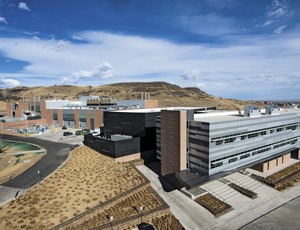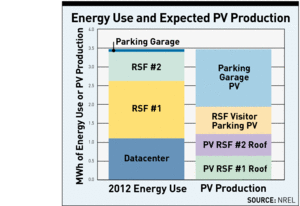

Though more than six months late, the U.S. Dept. of Energy's National Renewable Energy Laboratory in Golden, Colo., flipped the switch earlier this month on the final section of its nearly 2.5-MW photovoltaic system to power DOE's ultra-energy-efficient Research Support Facility. Turning on the 1.1-MW PV array on the RSF's parking garage means NREL can begin tracking whether the office building-garage complex is hitting its net-zero energy-use goal of generating as much power annually as it uses.
"We are meeting our energy-efficiency targets," says Shanti Pless, NREL's senior research engineer. "This will allow us to meet our energy-generation targets."
In another milestone, the first research project is just getting under way in the lab's newest science building—the 175,000-sq-ft Energy Systems Integration Facility. "The $135-million investment in ESIF is needed to understand how to integrate large amounts of renewables into the national electric grid," says Pless.
Getting renewable energy systems connected into the grid isn't easy. The garage's PV array came on line late due to the power company's concerns about backfeed. NREL had to buy a transformer that would provide a safety break.
"If ESIF had been up and running, we would have been able to work with the utility to [quickly] model how the garage array was going to operate within its system," says Jeffrey M. Baker, DOE's Golden-based manager of project management and evaluation.
ESIF is the most technical of NREL's projects contracted under a performance-based design-build delivery model devised to produce affordable, ultra-green buildings (ENR 4/11/2011 p. 46). "The job came in on time and on budget," says Baker. "This proves the model works for highly technical projects, though ESIF was more of a challenge than the RSF."
The delivery model, masterminded by Baker, has been adapted for at least three other buildings—one at DOE's Stanford Linear Accelerator National Laboratory in California, one at the Sacramento Municipal Utility District and one at the University of California, San Francisco.


Post a comment to this article
Report Abusive Comment